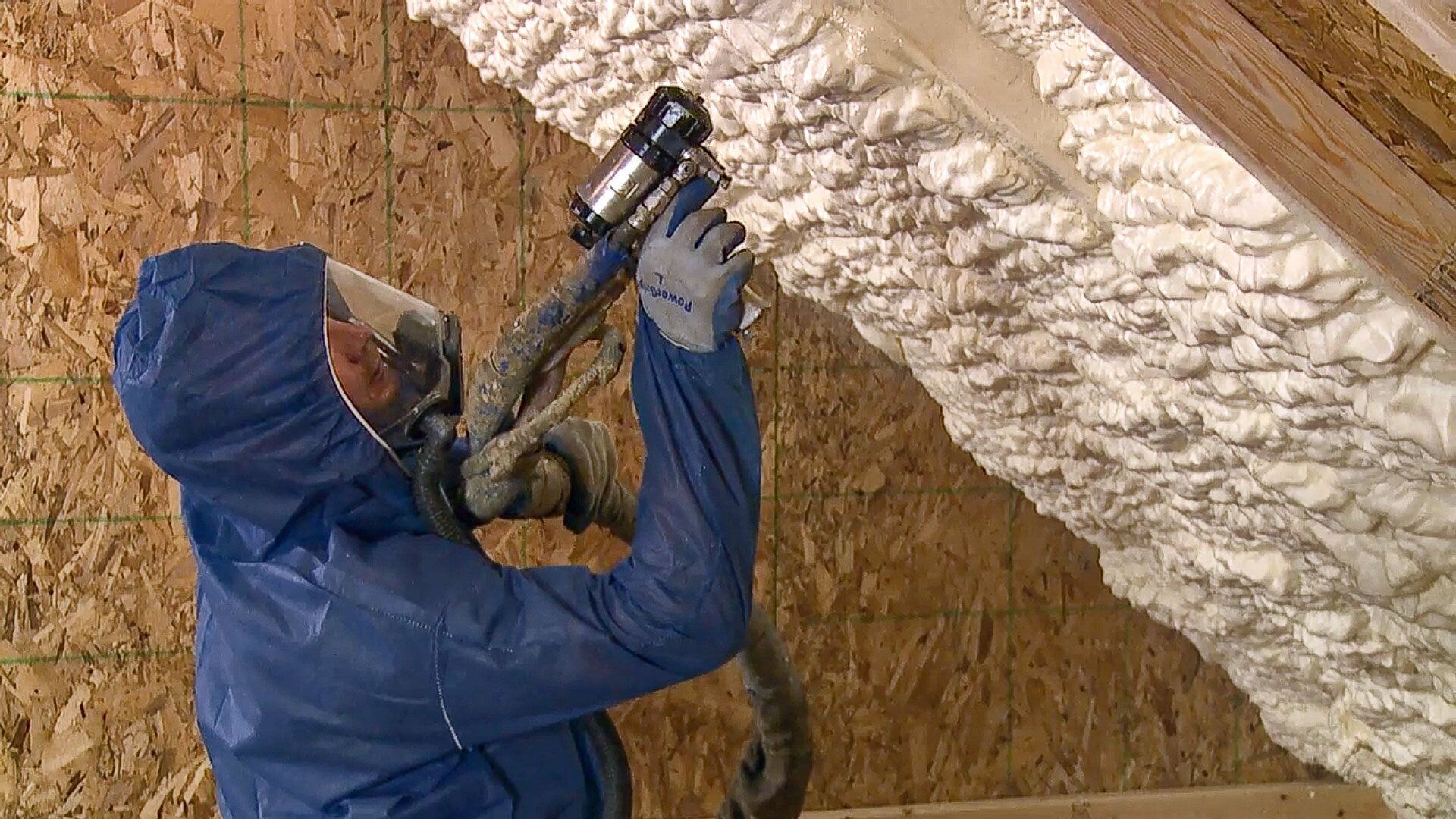Attic Insulation: Is Closed Cell Foam with Cellulose Really the Best of Both Worlds?


You know your attic needs insulation because you have air leaks and ice dams on your roof.
You’ve probably seen some contractors recommend cellulose attic insulation or closed cell foam attic insulation, but this hybrid of closed cell spray foam and cellulose together is something you haven’t seen before.
Some insulation contractors are recommending 1- to 2-inches of closed cell spray foam with a layer of loose-fill cellulose on the attic flat. The theory is that spray foam gives you the air seal you want and the cellulose gives you the thermal resistance, but is it really the case, and is it the best option?
RetroFoam has been insulating attics with spray foam for more than 15 years and all across Michigan’s lower peninsula, so we know what is really the best option for you and your project.
We are on a mission to educate homeowners so they are armed with the knowledge they need to make an informed decision about their homes' comfort and energy efficiency.
RELATED: What is Flash and Batt Insulation?
Closed Cell Foam with Cellulose Attic Flat Insulation
When a contractor suggests closed cell spray foam and cellulose together on the attic flat, they are looking more at what R-Value they think you need, not the performance of the materials, as well as cost.
Let’s talk about R-Value and why contractors would offer this combo.
The thought is getting the benefits of foam insulation and building up the R-Value with the addition of cellulose. The thing about this is that it isn’t necessary and may not be effective. We’ll talk more about the pros and cons in a bit.
You don’t need to worry about R-Value numbers as much when it comes to insulation if you have a high-performing material like spray foam. Traditional insulation still allows for air movement through it, where spray foam is an air barrier, so air can’t get through it.
This is why the R-Value argument for the combo insulation doesn’t make sense. If you have a material that already creates an air seal, why do you need added insulation?
Another reason a contractor recommends this method is because of the stack effect in a home. Basically, stack effect is when air comes in through the crawl space, moves up through the floors and walls, and makes its way up and out through the attic.
This creates air pressure which pulls not just the outside air, but the air you pay to cool and heat out with it.
The closed cell and cellulose combo are offered as a cheaper option, but cheaper isn’t always better.
Pros and Cons of Closed Cell Foam with Cellulose Attic Insulation
All insulations have a set of pros and cons, so it’s important to know them so you know what you’re getting into.
Let’s take a look at the pros and cons of the closed cell spray foam and cellulose combo attic insulation.
PROS
- Powerful hybrid insulation method if done properly.
- Less expensive than spray foam only in the attic.
- Separates the attic from the rest of the building envelope.
CONS
- A minimum of 2-inches of closed cell spray foam is needed for an air seal. If less is applied it defeats the purpose.
- Cellulose shifts and settles over time and would need to be maintained.
- This would require a vented attic system, which allows air into the attic. This air will cause the cellulose to shift.
- A vented attic also allows for moisture in the attic. Cellulose retains moisture and loses its R-Value when it becomes wet.
- Two inches of closed cell doesn’t offer enough thermal resistance in an attic flat.
- To combat stack effect, the insulation should be placed on the outermost layer of your home’s envelope, like the roof deck.
RELATED: What is the Best Attic Insulation? (Spray Foam vs Fiberglass vs Cellulose)
Best Attic Insulation
Insulating your attic is important because this is where the air you pay to heat or cool will escape without an air seal.
The closed cell spray foam and cellulose attic insulation combo could be an option if you are only worried about reaching a certain R-Value with an air seal for the lowest possible cost. However, if you are looking for your insulation to make a difference in the comfort and energy savings of your home, with no annoying problems down the road, then this combination may not be the best choice for you.
Open cell spray foam is great for the attic because it creates the air seal you need while promoting the health of your roof when sprayed on the roof deck.
If you want to learn more about the benefits of foam insulation in general, check out the Learning Center on our website.
About Amanda Emery
Amanda previously has worked as a breaking news and crime reporter, TV news producer, and editor in Flint and Detroit. Throughout her career as a journalist, she has won several awards from The Society of Professional Journalists - Detroit Chapter and the Michigan Press Association. As part of the RetroFoam of Michigan family, Amanda uses her experience as a journalist to write content that will help educate homeowners on the benefits of foam insulation. When Amanda isn’t writing, she’s spending time with her husband and rescued huskies. She also loves knitting, making art, cooking, and hosting dinner and a movie night for friends and family.


